[ Read also PART I of this interview ]
The “New Worlds” issue of August 1967 (cover by Eduardo Paolozzi).
![]()
6. Ballard, again in his autobiography, wrote that he tried to dissuade you from following the neo-Art Nouveau psychedelic aesthetics then prevailing in the underground magazine and rock scene (the Hapshash style) and go for Surrealism and Pop as references for New World‘s art direction. But apart from a cover by Paolozzi, the magazine seemed to have a definite identity of its own, neither “Pop-ish” nor “surrealist”. What was it that set it visually apart from Oz, IT International Times and other underground magazines, or literary magazines such as Ambit?
MM: Jimmy was a bully and I spent most of my time with him telling him what I intended to do. He had absolutely no input into the magazine (and sulked about it!) and I had no intention of doing quasi-Art Nouveau, except for ironic purposes occasionally. We resisted him (much as we were close friends) as well as the ‘underground’ artists. Mal Dean was as at odds with the ‘underground’ as I was. After we delivered the last Jerry Cornelius strip to IT Mal heard Mick Farren (also a friend) saying ‘this is taking the piss out of everything we’re doing’. I came out of commercial publishing and wanted covers that were good and which stood out on the news-stand. I haven’t read much of Jimmy’s memoir and didn’t know he claimed that. In my view he wanted 2nd-rate surrealists. I contacted artists like Paolozzi and others and ran articles on them because they were the nearest I could get to what I wanted. I remember an argument with Jimmy who wanted me to run Dali and I didn’t want to run Dali etc, because I thought them over-used by that time. I think it was generational. The surrealists meant more to Jimmy but I felt they’d been on the covers of every American magazine since the 1930s. That ten years difference gave us different tastes.
On Ballard and the Surrealists:
“I remember an argument with Jimmy who wanted me to run Dali and I didn’t want to run Dali etc, because I thought them over-used by that time. I think it was generational.”
7. How did you work with Charles Platt, your principal designer, on the look of New Worlds?
MM: Charles came to the magazine straight from the London School of Printing course, bringing ideas about layout and design he’d picked up or developed there. I suppose he was about twenty. He was also a writer, with stories like Linear City and Garbage World, and had produced a fanzine as part of a ‘new wave’ of sf fanzine publishers who were unhappy with the tendency of sf ‘fandom’ to be a social organisation and wanted to look at science fiction in a more critical way. The term ‘new wave’ was originally coined to describe these fanzines. Out of them came writers like Christopher Priest and others. I was impressed by Platt’s design sense and invited him to become our art editor during an early ‘makeover’ of the paperback size issues (which also included getting another writer/illustrator, Keith Roberts, to do our covers). Platt retained an overall control of the design when at his suggestion we used Nigel (later ‘Simon’) Francis as art editor, then, when Francis retired, Richard Glyn Jones, who was also an artist doing (with Mal Dean) the Jerry Cornelius strip in IT.
Charles’s influence extended to a number of publishers, including Panther Books (Granada) who adopted many of his design ideas. Barney Bubbles was also impressed by Platt’s design and at one point they were both doing stuff for Frendz, the underground magazine, as was Jim Cawthorn, who did some strips for them, as well as single illustrations and, incidentally, painted a set of T-shirts for Hawkwind to wear on stage. Charles later became editor of NW after I retired to become ‘publisher’ rather than editor. Charles was also friends with Ballard. They had an obsession with cars in common. Charles once drove an old favourite car up to Scotland to drive it over a cliff into the sea because he couldn’t bear the idea of anyone else owning it.
Charles Platt’s cover for New Worlds issue 193 (August 1969).
![]()
8. In the 1970s, New Worlds went back to the paperback format, but this time the visuals looked more, shall we say, “commercial” and less experimental than in the previous phase. Was it the realistic approach to make the magazine compete with the other SF paperbacks on the book displays?
MM: I wasn’t doing much on those. I kept my name on as editor for a while, then backed out, letting my then wife Hilary and Charles decide the general content and look of NW. I later started doing more punky, fanziney issues for a while. Letting a number of people try their hand at putting an issue together.
“I later started doing more punky, fanziney issues…” (New Worlds issues from the late 1970s)
![]()
9. Allison & Busby seems to have published pretty good covers for the hardback editions of your books in the late 1960s and early 1970s, especially the ones for The Final Programme (with the comic book-style artwork of Mal Dean) and Behold the Man (a terrific cover designed by Gabi Nasemann). This one actually features you on it. You seemed also to rely on your NW illustrators and designers, like Dean and Nasemann. Did they and other NW staff do any more of your covers?
MM: I have to admit I insisted on them being used and A&B didn’t seem to mind that. Richard Glyn Jones, a later art editor, also did some design for them and others.
Behold the author: Michael Moorcock’s face on the cover of Allison & Busby’s 1st edition of Behold the Man (1969, designed by Gabi Nasemann).
![]()
10. Do you recall on how many covers of your books you appeared?
MM: No, sorry!
11. On the paperback front, were you happy with the covers for the NW anthologies published by Panther and the one for A Cure for Cancer published by Penguin and designed by David Pelham? (I’ve quite a crush for those abstract Panther ones, I must say).
MM: Fairly happy. I didn’t like that Penguin cover because it was too much derived from Alan Aldridge who had become very fashionable (see also the poster for the film version of The Final Programme). I wasn’t really into airbrushed fetishism. Again, that was more Jimmy’s thing.
“I wasn’t really into airbrushed fetishism…”: cover for A Cure for Cancer (Penguin, 1971, designed by David Pelham)
![]()
12. Harlan Ellison had the Dillons (who made a cover for your novel The Black Corridor at Ace Books), Ballard had all the major Surrealists on his covers for Penguin and Cape. Could perhaps your special connection with a particular artist have happened with James Cawthorn?
MM: We’d been friends since I was fifteen and for certain illustration (conventional, mostly) I tried to use him but I have to admit I mostly preferred Mal Dean and others. Also for commercial covers I used to say ‘when in doubt use Moreau’. No point in using a second rate romantic when the full-blooded work was available and unfamiliar to most readers of the day!
The Dillon treatment: cover for The Black Corridor by Leo and Diane Dillon (Ace, 1969).
![]()
13. In the 1970s, your SF and heroic fantasy fiction influenced a very popular band, Hawkwind, which you joined at an early stage of their career. This brought you in contact with Barney Bubbles (né Colin Fulcher) , the amazingly creative and prolific graphic designer for all the band’s covers, including the cover for your own solo record New Worlds Fair in 1975. How was it to work with BB? Did you know him already before Hawkwind? Did you ever invite him to design one of your books’ covers?
MM: I knew Barney for years but he was still into nouveau-Nouveau mostly at that time. Barney and Charles Platt lived a few blocks from one another in the Portobello Road and environs, where the offices of New Worlds and Frendz were situated, virtually side by side.
By the time he was working for Stiff Records he had more work than he could handle and I never wanted to overload him, he was such a sweet guy. But I would have used him if I could. As it was I used Glyn Jones for that period.
Charles later emigrated to the US and Barney, of course, took his own life.
A tasty, tasty world: the first two lives of Jerry Cornelius: top, by Harry Douthwaite (New Worlds issue nr. 157, December 1965); bottom, by Mal Dean (Allison & Busby ad printed in New Worlds issue nr. 194, September 1969)
![]()
14. What is for you the best graphic depiction of your two most famous characters, Elric of Melniboné and Jerry Cornelius? And what were their sources in terms of visual reference? From what I could see of Mal Dean’s drawings of Cornelius, he appeared like a sombre version of Neil Young, and I remember to also like very much the sensuous version Moebius did of the character in his mid-1970s “The Airtight Garage” comic book.
MM: Cawthorn for fantasy. Dean for contemporary stuff like Cornelius. After Mal died, Glyn Jones stepped in. I had some great French covers, too. I remember going to the opening of the Heavy Metal movie in Paris and sitting there with Moebius and others. We were astonished that so much of our work had been ripped off. One of my best friends, Fromental, was editor of HM and we had friends and artists in common. Slocombe did an ambitious project for The Entropy Tango but the publisher died and the work only appeared in black and white in the end.
“…Woodroffe’s rather fetishistic images for Cornelius…” (cover illustration for A Cure for Cancer, 1976)
![]()
15. Were you always involved in the cover design of your books, or was it something you never gave much thought to? And do you remember having had any really BAD surprises when seeing the final results?
MM: Always. I picked Haberfield for all the Mayflower titles. Woodroffe for Quartet and so on. I didn’t like Woodroffe’s rather fetishistic images for Cornelius, though. Later Panther started using some very average covers and I had to step in and threaten to pull the books. I picked all the covers for the Orion omnibuses (mostly Amano, Gould and Reeves) and also for the latest illustrated Elrics. I picked John Picacio for the 25th anniversary version of Behold the Man and have been associated with him ever since.
“I had some great French covers, too”: Le Programme Final (Titres SF, 1981, cover illustration by Kelek).
![]()
16. You’ve been extensively translated and published all around the world. Do you recall any foreign editions that have caught your eye for their design qualities?
MM: I especially like French and Roumanian covers. Again, I know some of those artists.
On a good choice for commercial covers: “I used to say ‘when in doubt use Moreau’. No point in using a second rate romantic when the full-blooded work was available and unfamiliar to most readers of the day…”
17. What would you say is the best way to tackle the design for a Michael Moorcock book cover: conferring with you before presenting a mock-up, or finding clues in the text? Or going head-on for the “surprise-the-author” option?
MM: Once I’ve picked the artist I’m happy to let them surprise me. You usually get the best work from an artist if you give them their head. I’ve worked that way since I did comics with the likes of Don Lawrence and the Embletons. Still do, which is why I like working so much with Simonson.
Thank you, Michael Moorcock!











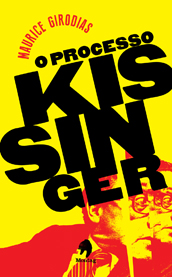
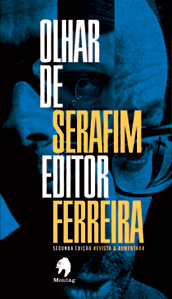
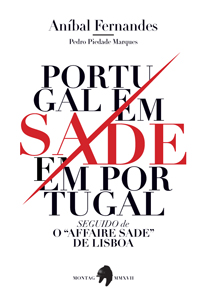
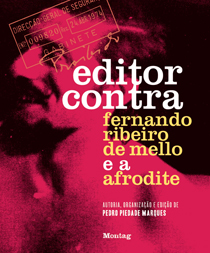
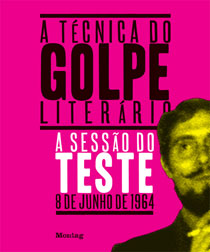

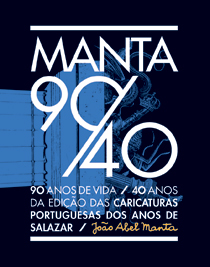
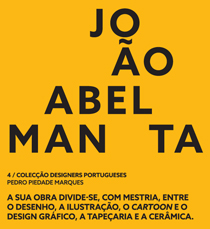
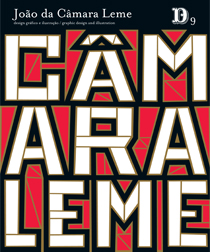
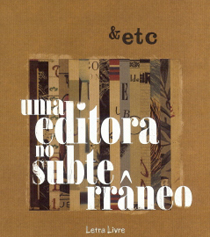
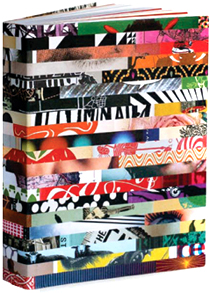
Pingback: New Worlds, 1967-1971 « Montag : by their covers : resgate do fogo
Can we try again with that link, please? ;-)
Pingback: Michael Moorcock: “I think I preferred my own imagination” (Part I) | Montag : by their covers : resgate do fogo